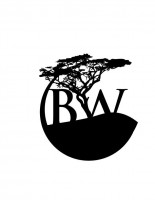In the late 1980s, the Mauritian Parakeet (Psittacula eques), also called the Echo Parakeet, was considered the most endangered parrot on earth. By that time, researchers, who had become really good at finding them, could only account for four or five pairs in the wild. These emerald green parakeets are only found on the island of Mauritius in the Western Indian Ocean, and 30 years ago you would have been extremely lucky to see one or two pairs fly over the Black River Gorge. It was clear then that this species was teetering on the brink of extinction, along with several other Mauritian endemics.
Many mainstream conservation funds and authorities didn’t want to invest in what they saw as a certain failure, effectively writing off the Echo Parakeet as a nonviable species, even though they were still holding on. Then stepped in the Mauritian Wildlife Foundation (MWF), Durrell Wildlife Conservation Trust, and World Parrot Trust. To ensure there would be no more species lost from this island, made famous by the extinction of the Dodo in 1690, a team of dedicated people banded together with the National Parks and Conservation Service. It was a unified effort that included people like Carl Jones, Vikash Tatayah, Mike Reynolds, Heather Richards, and many other researchers, collaborators, volunteers, and conservationists.
 Illustration via anyonefortree.dotc.om
Illustration via anyonefortree.dotc.om
The last remaining Mauritian parakeets were challenged a chronic lack of suitable nesting trees, unprecedented nest predation by a booming population of introduced black rats, ceaseless human disturbances, feral pigs and deer, and staunch competition with the more plentiful and aggressive Rose-ringed Parakeet (Psittacula krameri) introduced by the island’s immigrants. By the late 1970s, the two to four Echo Parakeet pairs remaining in the wild were gravely threatened by heightened vulnerability to disease outbreaks and tropical cyclones, which made every year a nerve-wracking experience for those concerned with the future of this species.
 Echo Parakeet nesting box (photo credit: Dennis Hansen)
Echo Parakeet nesting box (photo credit: Dennis Hansen)
After successful captive breeding efforts, the MWF and its partners made a bold decision in the 1990s to launch intensive population management measures. Captive-bred Echo Parakeets were released and provided with artificial nest boxes and supplementary feeding stations. Captive-bred chicks were also introduced to nest boxes, and so began the process of rebuilding a viable population. By 2010, they had achieved a population of 500 Echo Parakeets (a total of 550 Echo Parakeets expected in February 2011)! A huge conservation milestone and a wonderful story!
 Captive-bred chicks (photo credit: Heather Richards)
Captive-bred chicks (photo credit: Heather Richards)
Vikash Tatayah from the MWF says that, since 1984, the Mauritius Kestrel, Pink Pigeon, Rodrigues Warbler, Rodrigues Fody and Echo Parakeet have been saved from extinction. This means that Mauritius has saved more species than any other country in the world. Even more than New Zealand and the United States (including Hawaii), which have each saved four species from the point of no return. The MWF and its partners have also prevented the loss of numerous plant species and have worked hard to restore native forest habitats, establishing Mauritius as a leader in endangered species conservation. Yet, Vikash points out: “There is still a lot more to do!”.
 Mauritius Kestrels (photo via World Parrot Trust)
Mauritius Kestrels (photo via World Parrot Trust)
Today, the Echo Parakeet is restricted to a remnant of native forest that comprises less than 40 square kilometers (15 square miles) of the Black River Gorge National Park. Like most endangered parrots, they saw their limited forest habitat degraded and broken down until they were forced to seek new food resources and nesting sites in habitat that simply couldn’t support them. Now, only 1% of their natural habitat remains.
We must continue to support the species until the forest habitat they depend on has been rehabilitated. Threats posed by nest predation, competition with honeybees, and further habitat destruction have been controlled. However, we now face the ominous arrival of Psittacine Beak and Feather Disease (PBFD), which has already begun to reduce body weights in healthy Echo Parakeets and has seen featherless birds unable to survive in the wild. Many have died from the disease and the international community in parrot research and conservation is working feverishly to combat this debilitating “Doomsday Virus” for endangered parrots around the world.
 Echo Parakeet infected with PBFD (photo credit: Elaine Fraiser)
Echo Parakeet infected with PBFD (photo credit: Elaine Fraiser)
The World Parrot Trust will continue supporting what is widely recognized as the most successful parrot conservation program ever undertaken. To read more about these magnificent birds, please click here.
Photo via World Parrot Trust
![]()






this is a great an encouraging story- it shows that the efforts of a very tiny number of people or even individuals can turn the process of extinction around- well done all involved especially MWF, as well as the author of this piece and Bush warriors. who is the author of this btw?
Hi David— This is a story by Dr. Steve Boyes of the World Parrot Trust. And yes, indeed, it is encouraging! Thank you!
Alhas!! Good work
It shows that there are still people who care and are dedicated to a cause when they pick it up. Even better, patient work has produced encouraging results. Keep it up, you all!
May be it is true. MAN PROPOSES AND GOD DISPOSES. I hope you will eradicate the deadly viruses.